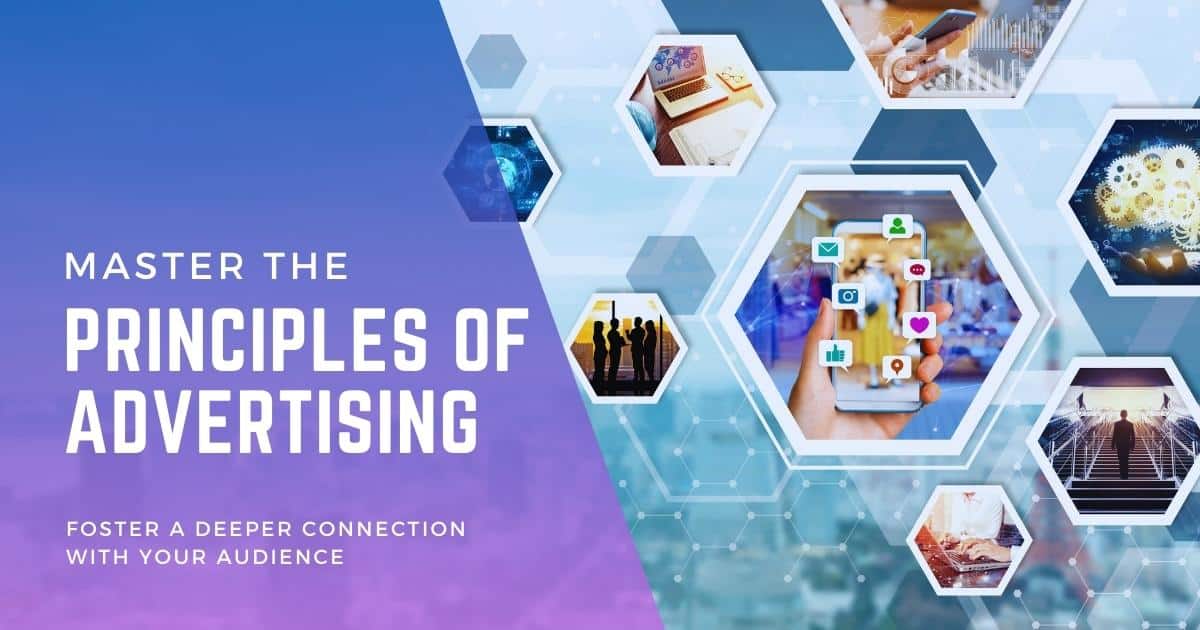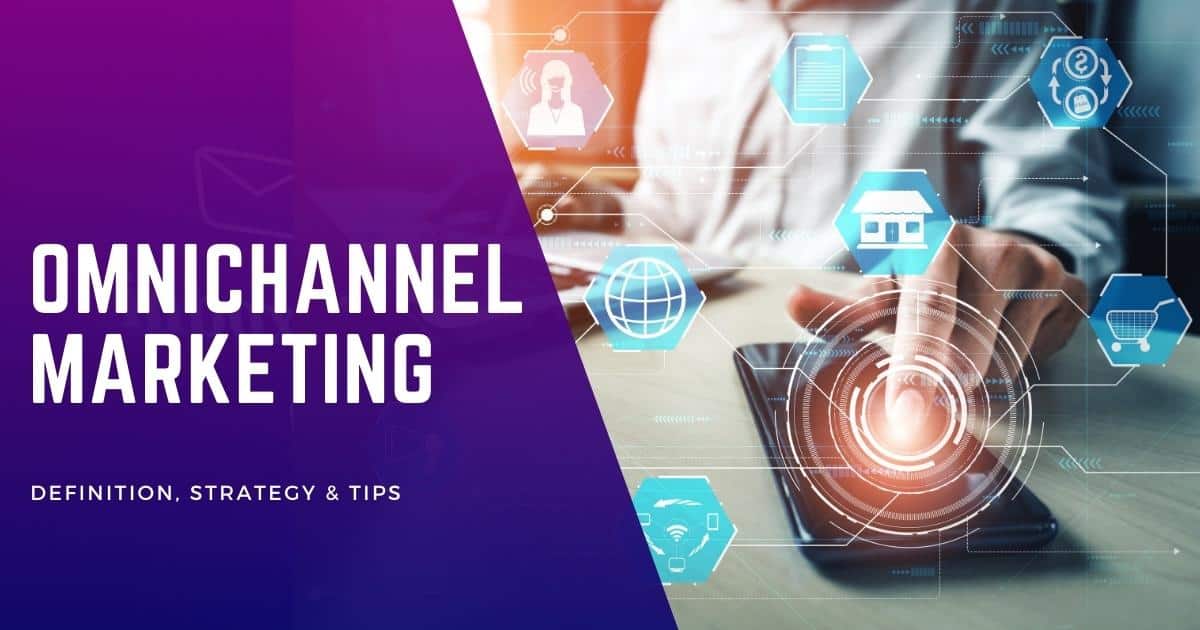Customer retention emails have a significant impact on your business’s bottom line. These emails help you build long-term relationships with your customers, increasing customer loyalty and repeat purchases. By implementing effective customer retention email strategies, you can engage with your existing customer base in a cost-effective manner. This approach not only reduces churn but also boosts revenue for your business.
Retention emails provide a valuable opportunity to stay connected with your customers, offering personalized content and exclusive offers that keep them coming back for more. With the right messaging and timing, these emails can nurture customer relationships and encourage ongoing engagement.
We will discuss key strategies for creating impactful retention emails that drive results and share practical tips to optimize their effectiveness.
Understanding the Importance of Email Marketing for Customer Retention
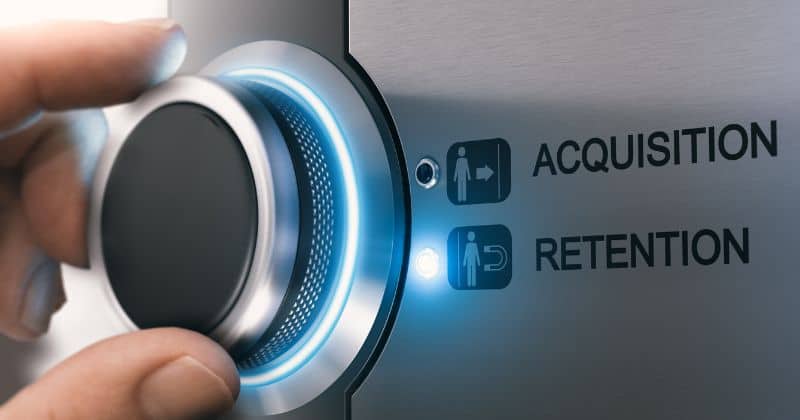
Email marketing has emerged as one of the most effective channels for customer retention. It allows businesses to directly reach out to their customers and stay top-of-mind. With its ability to nurture relationships through personalized and targeted content, email marketing has become an indispensable tool in today’s digital landscape.
Reach Out Directly and Stay Top-of-Mind
Email marketing provides a direct line of communication between businesses and their customers. By obtaining permission-based email addresses, companies can send messages directly to individuals who have shown interest in their products or services. This direct approach ensures that important updates, promotions, and offers are delivered straight to the customer’s inbox.
By consistently engaging with customers through well-crafted emails, businesses can establish themselves as a trusted brand. Regular communication helps to keep the company at the forefront of customers’ minds, increasing the likelihood of repeat purchases and long-term loyalty.
Nurture Relationships with Personalized Content
One of the key advantages of email marketing is its ability to deliver personalized content tailored to each recipient. By leveraging customer data such as purchase history, browsing behavior, and demographic information, businesses can create highly targeted campaigns that resonate with individual recipients.
Personalization goes beyond simply addressing recipients by name; it involves delivering relevant content based on their preferences and interests. For example, if a customer recently purchased a pair of running shoes, sending them an email featuring related products or tips for improving running performance would be highly valuable and likely to drive engagement.
Communicate Important Updates and Offers
Email marketing serves as an effective platform for sharing important updates with customers. Whether it’s announcing new product releases, changes in business operations, or upcoming events, emails provide a centralized space where businesses can communicate crucial information directly to their audience.
Email marketing enables businesses to share exclusive promotions and offers with their loyal customers. By providing special discounts or early access to new products, companies can incentivize repeat purchases and reward customer loyalty. This targeted approach helps to create a sense of exclusivity and value for customers, fostering stronger relationships and encouraging continued engagement.
Control Timing and Frequency of Messages
One of the greatest advantages of email marketing is the level of control it offers businesses over the timing and frequency of their messages. Unlike other marketing channels that rely on algorithms or external factors, email campaigns can be strategically planned and executed according to the company’s objectives.
Businesses can determine when emails are sent out, ensuring they reach customers at optimal times for maximum impact. Moreover, by carefully managing the frequency of their emails, companies can strike a balance between staying top-of-mind without overwhelming recipients with excessive communication.
Crafting Engaging Retention Emails to Keep Customers Hooked
Crafting engaging retention emails is a crucial aspect of any successful email marketing strategy. These emails are designed to keep your customers interested, connected, and ultimately, retained.
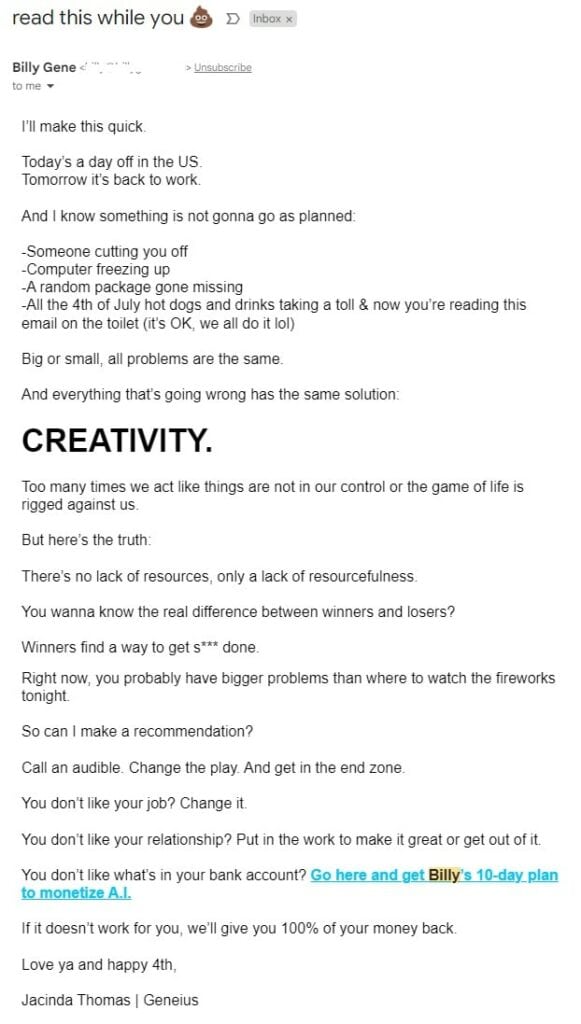
Engaging Subject Lines
The subject line of your email is the first thing that recipients see in their inbox. It acts as a gateway to your message, making it essential to capture their attention right away. To craft engaging subject lines:
- Be concise and clear: Use language that is easy to understand and avoids ambiguity.
- Create a sense of urgency or curiosity: Incorporate words that convey a time-sensitive offer or pique the recipient’s interest.
- Personalize when possible: Include the recipient’s name or reference their past interactions with your brand.
Compelling Visuals and Design Elements
Visual appeal plays a significant role in capturing the attention of your audience. By incorporating compelling visuals and design elements into your retention emails, you can enhance their overall impact. Consider the following tips:
- Use high-quality images: Choose visually appealing images that align with your brand identity and resonate with your target audience.
- Incorporate branding elements: Include your logo, color scheme, and consistent typography to reinforce brand recognition.
- Break up text with visuals: Use images or graphics strategically to break up long blocks of text and make the email more visually appealing.
Personalized Content
Personalization is key. By tailoring the content based on each customer’s preferences or past interactions, you can make them feel valued and understood. Here are some ways to personalize your emails:
- Segment your audience: Divide your customer base into smaller groups based on demographics, purchase history, or engagement level. This allows you to send targeted messages that resonate with specific segments.
- Use dynamic content: Customize email content based on individual recipient data, such as their name, location, or purchase history. This can be done using merge tags or personalization tokens.
- Recommend relevant products: Leverage customer data to suggest products or services that are likely to interest each recipient. This can be based on their previous purchases or browsing behavior.
Clear Calls-to-Action
Including clear and compelling calls-to-action (CTAs) in your retention emails is essential for driving desired actions from your recipients. Here’s how you can create effective CTAs:
- Use action-oriented language: Encourage recipients to take specific actions by using verbs that convey a sense of urgency and excitement.
- Make it visually prominent: Highlight the CTA button with contrasting colors, larger font size, or surrounding white space to draw attention.
- Provide a clear benefit: Clearly communicate what recipients will gain by clicking on the CTA button, whether it’s accessing exclusive content, claiming a discount, or participating in a contest.
Experiment with Different Email Formats
To keep things fresh and maintain engagement with your audience, consider experimenting with different email formats. By offering variety in your retention emails, you can cater to different preferences and capture the attention of recipients who may have become accustomed to certain types of emails. Some formats you can try include:
- Newsletters: Share industry news, updates about your brand, and valuable content that educates and entertains your audience.
- Product updates: Inform customers about new features or improvements to existing products they may be interested in.
- Surveys and feedback requests: Engage customers by seeking their opinions and feedback on their experience with your brand.
By implementing these strategies into your customer retention emails, you can increase engagement levels and foster long-term relationships with your audience.
Leveraging Personalization for Effective Customer Retention Emails
Segmenting your email list is a powerful strategy that allows you to send targeted messages to specific groups of customers. By dividing your audience based on demographics, purchase history, or other criteria, you can tailor the content of each email to match their interests and needs.
Addressing recipients by their names in the email body or subject line adds a personal touch and makes them feel valued. It creates a sense of connection and increases the likelihood that they will engage with your emails.

Using dynamic content blocks takes personalization even further by allowing you to customize different sections of an email based on recipient attributes or preferences. This means that each customer receives an email that is uniquely relevant to them.
Segmenting Your Email List for Targeted Messages
Segmentation involves dividing your email list into smaller groups based on specific criteria. For example, you can segment customers by age, location, purchasing behavior, or engagement level. By doing so, you can create more personalized and relevant content for each segment.
Benefits of segmenting your email list:
- Increased open rates: When recipients receive emails tailored specifically to their interests or needs, they are more likely to open and engage with them.
- Higher click-through rates: By sending targeted messages to segmented lists, you can provide relevant offers or information that resonate with each group.
- Improved conversion rates: Personalized emails have been shown to generate higher conversion rates because they speak directly to the recipient’s pain points or desires.
- Reduced unsubscribe rates: When customers receive valuable content that aligns with their preferences, they are less likely to unsubscribe from your mailing list.
Examples of segmentation criteria:
- Demographics: Age, gender, location
- Purchase history: Frequency of purchases, average order value
- Engagement level: Open rate, click-through rate
- Preferences: Product category interests (e.g., clothing, electronics)
Tailoring Content Based on Customer Data or Behavior Patterns
Once you have segmented your email list, it’s essential to tailor the content of each email to match the specific segment. This can be done by leveraging customer data or analyzing their behavior patterns.
Benefits of tailoring content:
- Increased relevance: When customers receive content that speaks directly to their interests or needs, they are more likely to engage with it.
- Enhanced customer experience: Personalized emails create a positive impression and show that you understand and care about your customers’ preferences.
- Improved conversion rates: By providing targeted offers or recommendations based on customer data, you can increase the likelihood of conversions.
Examples of tailored content:
- Product recommendations: Based on previous purchases or browsing history, suggest products that align with the customer’s interests.
- Exclusive offers: Provide personalized discounts or promotions based on the customer’s purchase history or loyalty status.
- Abandoned cart reminders: Send automated emails reminding customers about items they left in their shopping carts and offer incentives to complete the purchase.
Addressing Recipients Personally for a Human Touch
Personalization goes beyond just customizing the email content; it also involves addressing recipients by their names in the subject line or body of the email. This small gesture can significantly impact how customers perceive your brand.
Benefits of addressing recipients personally:
- Increased engagement: Customers who see their name in an email are more likely to pay attention and engage with its content.
- Improved trust and loyalty: Personalized emails create a sense of connection and build trust between your brand and the recipient.
- Higher open rates: Emails with personalized subject lines tend to have higher open rates compared to generic ones.
Examples of personalization:
- Subject line personalization: Use merge tags to automatically insert each recipient’s name into the subject line (e.g., “John, Check Out Our Latest Offers Just for You!”).
- Body text personalization: Include the recipient’s name within the body of the email to make it feel more personalized and relevant.
Optimizing Subject Lines to Increase Open Rates of Retention Emails
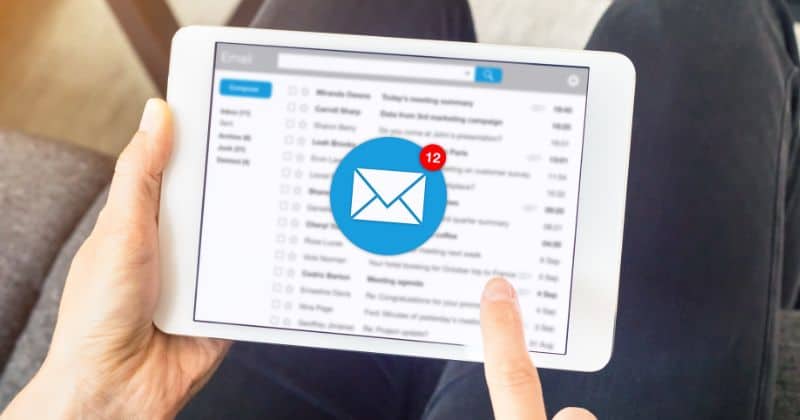
Crafting compelling subject lines is a must. An engaging subject line boosts open rates and increases the likelihood of recipients engaging with the email content, ultimately driving conversions.
Keep subject lines concise while conveying value or curiosity about what’s inside the email.
Short and concise subject lines are more likely to catch the reader’s attention in a crowded inbox. By keeping your subject lines brief, you make it easier for recipients to quickly scan and understand the purpose of your email. However, it is equally important to convey value or curiosity within those few words.
Consider using power words that evoke emotions or highlight the benefits of opening the email. For example, instead of a generic subject line like “Special Offer Inside,” you could try something more enticing like “Exclusive Discount: 50% Off Today Only!” This creates a sense of urgency and entices recipients to open the email to learn more about the offer.
Use action-oriented language to encourage recipients to open and engage with your emails.
Subject lines that include action-oriented language can be highly effective in driving engagement. By using verbs or phrases that prompt readers to take action, you create a sense of urgency and compel them to open your email immediately.
For instance, instead of a passive subject line such as “New Product Announcement,” you could use an active one like “Discover Our Exciting New Product Today!” This encourages recipients not only to open the email but also engages them in exploring what your brand has to offer.
A/B test different subject lines to identify which ones resonate best with your audience.
Every audience is unique, so it’s essential to experiment with different subject lines through A/B testing. This involves creating two versions of an email campaign with slightly different subject lines and sending them out randomly among segments of your subscriber list. By analyzing metrics such as open rates and click-through rates, you can determine which subject lines resonate best with your audience.
A/B testing allows you to gather valuable insights about what works and what doesn’t. It helps you understand your audience’s preferences, enabling you to refine your subject lines for maximum impact. Remember to test one variable at a time to accurately measure the effectiveness of each change.
Avoid using spam trigger words or excessive punctuation that might land your emails in the spam folder.
To ensure that your retention emails reach recipients’ inboxes, it is crucial to avoid using spam trigger words or excessive punctuation that may trigger email filters. Spam trigger words are terms commonly associated with unsolicited or promotional content, and their usage can increase the likelihood of your emails being marked as spam.
Examples of spam trigger words include “free,” “discount,” “guarantee,” and “limited time offer.” While these words may be relevant to your email content, it’s important to use them sparingly and balance them with other non-triggering words. Excessive use of exclamation marks or symbols like “$$$” can also raise red flags for spam filters.
Personalize subject lines by including recipient-specific information or offers.
Personalization is a powerful tool. By personalizing subject lines with recipient-specific information or offers, you can create a sense of individualized attention and relevance.
For example, instead of a generic subject line like “We Miss You,” consider personalizing it based on the recipient’s purchase history: “John, We Miss You! Enjoy 20% Off Your Next Order.” This not only grabs John’s attention but also makes him feel valued as a customer.
Personalization goes beyond just inserting the recipient’s name; it involves tailoring the content based on their preferences and behaviors. By leveraging data from past interactions, you can create subject lines that resonate on a deeper level with each individual recipient.
Utilizing Feedback Surveys in Retention Emails for Improved Customer Satisfaction
Gathering feedback from customers is crucial for understanding their experience, satisfaction levels, and areas of improvement. One effective way to obtain this valuable information is by incorporating short surveys into retention emails. By doing so, businesses can gain insights that help enhance their products or services while showing appreciation for their customers’ opinions.

Include short surveys in retention emails to gather valuable feedback from customers.
When crafting retention emails, it’s essential to include a short survey that allows customers to provide feedback easily. These surveys should be concise and straightforward, ensuring that customers can complete them quickly without feeling overwhelmed. By including surveys directly within the email, businesses make it convenient for customers to share their thoughts and opinions.
Ask specific questions about their experience, satisfaction levels, or suggestions for improvement.
To gather meaningful insights from customer feedback surveys, it’s important to ask specific questions related to their experience with the product or service. For example, businesses can inquire about overall satisfaction levels, specific features or aspects they enjoyed the most, or areas where improvements could be made. By asking targeted questions, businesses can collect focused and relevant feedback that helps drive enhancements.
Offer incentives (e.g., discounts, freebies) to encourage customers to complete the survey.
Incentives play a significant role in motivating customers to take part in surveys. To encourage higher response rates and completion rates of these feedback forms within retention emails, businesses can offer incentives such as exclusive discounts or freebies upon completion of the survey. These incentives not only show appreciation but also provide an extra incentive for customers to take the time and effort to share their opinions.
Analyze survey responses and use the insights to enhance your products or services.
Once customer feedback has been collected through these surveys embedded in retention emails, it’s crucial for businesses to analyze the responses carefully. By examining patterns and trends within the data collected from multiple customers, businesses can identify common pain points or areas for improvement. This analysis can then be used to inform product development, service enhancements, or process improvements that address the specific needs and preferences of customers.
Show appreciation by acknowledging and acting upon customer feedback.
Customers appreciate being heard and seeing their feedback put into action. After analyzing survey responses, it’s vital for businesses to acknowledge the feedback received and communicate any changes or improvements made as a result. This not only shows customers that their opinions matter but also fosters a sense of loyalty and satisfaction with the brand. By actively responding to customer feedback, businesses demonstrate their commitment to continuously improving and meeting customer expectations.
Implementing Promotional Offers in Retention Emails to Drive Customer Loyalty
To drive customer loyalty and encourage repeat purchases, it is essential to implement promotional offers in your retention emails. These offers can include exclusive discounts, promotions, or rewards as a way of thanking loyal customers. By providing incentives for customers to continue engaging with your brand, you can strengthen their loyalty and increase the likelihood of them making future purchases.

Offer Exclusive Discounts, Promotions, or Rewards
One effective strategy to drive customer loyalty through retention emails is by offering exclusive discounts, promotions, or rewards. By giving customers access to special deals that are not available to the general public, you create a sense of exclusivity and make them feel valued. This can help foster a deeper connection between your brand and the customer.
Create a Sense of Urgency
To further enhance the effectiveness of promotional offers in retention emails, it’s important to create a sense of urgency. Setting limited-time offers or highlighting limited stock availability can create a fear of missing out (FOMO) among customers. This urgency prompts them to take immediate action and make a purchase before the offer expires or the product runs out.
Highlight Benefits and Value
When including promotional offers in your retention emails, it’s crucial to clearly communicate the benefits and value that customers will receive by taking advantage of the promotion. Explain how they will save money, gain access to exclusive products or services, or enjoy additional perks. By emphasizing these benefits, you increase the perceived value for customers and motivate them to engage with your offer.
Use Personalized Promo Codes
To track the effectiveness of different promotional offers and measure redemption rates accurately, it’s recommended to use personalized promo codes unique to each customer. This allows you to analyze which offers resonate most with your audience and adjust future strategies accordingly. Personalized promo codes add an extra layer of personalization that makes customers feel special.
Monitor Effectiveness through Metrics
To ensure the success of your promotional offers in retention emails, it’s essential to monitor and analyze their effectiveness. By tracking metrics such as redemption rates, you can determine which offers are generating the most engagement and driving customer loyalty. This data-driven approach enables you to refine your strategies over time and optimize future campaigns.
Mastering the Art of Customer Retention Emails
In today’s competitive business landscape, customer retention is crucial for sustainable growth. And one of the most effective tools in your arsenal is email marketing. By crafting engaging and personalized customer retention emails, you can keep your customers hooked and foster long-term loyalty.
Understanding the Importance of Email Marketing for Customer Retention
Email marketing allows you to stay connected with your customers, nurture relationships, and drive repeat purchases. It provides a direct line of communication that enables you to deliver relevant content, exclusive offers, and personalized recommendations. By leveraging the power of email, you can create a seamless customer experience that keeps them coming back for more.
Crafting Engaging Retention Emails to Keep Customers Hooked
It’s essential to grab your customers’ attention from the start. Utilize compelling subject lines that pique their curiosity and encourage them to open your emails. Once they’re engaged, provide valuable content that adds value to their lives or addresses their pain points. Whether it’s educational resources, product updates, or special promotions – make sure each email delivers something meaningful.
Leveraging Personalization for Effective Customer Retention Emails
Personalization is key in building strong customer relationships. Use data insights to segment your audience and tailor your emails accordingly. Address recipients by name and offer customized recommendations based on their purchase history or browsing behavior. By making each email feel like a one-on-one conversation with your customers, you’ll deepen their connection with your brand.
Optimizing Subject Lines to Increase Open Rates of Retention Emails
Subject lines play a vital role in determining whether an email gets opened or ignored. Craft concise yet compelling subject lines that create a sense of urgency or highlight the value within the email. Experiment with A/B testing to identify what resonates best with your audience and continuously optimize for better open rates.
Utilizing Feedback Surveys in Retention Emails for Improved Customer Satisfaction
Feedback is invaluable in understanding your customers’ needs and improving their experience. Include feedback surveys in your retention emails to gather insights on their satisfaction levels, preferences, and pain points. This not only shows that you value their opinions but also provides an opportunity to address any issues proactively.
Implementing Promotional Offers in Retention Emails to Drive Customer Loyalty
Promotional offers can be a powerful motivator for customers to stay loyal to your brand. Include exclusive discounts, rewards, or personalized incentives in your retention emails to encourage repeat purchases. By making customers feel appreciated and providing them with added value, you’ll foster a sense of loyalty that keeps them coming back time and again.
FAQs
How often should I send customer retention emails?
The frequency of customer retention emails varies based on your industry and customer behavior. However, a general guideline is to send one email per month to maintain engagement without overwhelming subscribers. Tailor content and timing to customer data for optimal results.
How to measure customer retention email campaign success?
To measure the success of a customer retention email campaign, focus on key metrics such as open rate, click-through rate, conversion rate, and customer lifetime value. A/B testing can provide insights into what resonates with your audience. Analyze these data points over time to assess effectiveness and make data-driven adjustments.
What are best practices for writing subject lines in customer retention emails?
For customer retention emails, subject lines should be personalized, create a sense of urgency, and convey clear value. Utilize A/B testing to gauge effectiveness. Keep the character count under 50 for optimal display on mobile devices. Metrics like open rates can offer insights into subject line performance.
How can I make my customer retention emails more engaging?
To enhance engagement in customer retention emails, use personalized content based on customer behavior and preferences. Incorporate interactive elements like clickable buttons for quick actions. Segment your email list to deliver targeted messages and employ A/B testing to refine content and layout. Monitor metrics such as click-through and conversion rates for continual improvement.
Is it important to segment my audience for customer retention emails?
Segmenting your audience for customer retention emails is crucial for delivering targeted, relevant content. Segmentation based on factors such as purchase history or engagement level allows for personalized messaging, which can improve key metrics like open and conversion rates. It facilitates more effective and efficient communication.
What is a customer retention email?
A customer retention email is a targeted communication sent to existing customers to encourage continued engagement and loyalty. These emails may offer special discounts, provide valuable content, or highlight new features. The goal is to maintain a strong customer relationship and prevent churn. Metrics such as open rates and click-through rates are often used to gauge effectiveness.
What is an example of customer retention?
An example of customer retention is a subscription renewal program that offers incentives for continuous service. Customers receive periodic discounts or exclusive content, encouraging them to maintain their subscription. This strategy aims to minimize churn rates and maximize lifetime customer value, often measured through key performance indicators like renewal rates.
What is a good email retention rate?
A good email retention rate commonly falls between 35% and 50%, although this can vary by industry. Retention rates are assessed through metrics such as open and click-through rates, as well as unsubscribe and complaint rates. Higher percentages indicate effective, long-term subscriber engagement.


